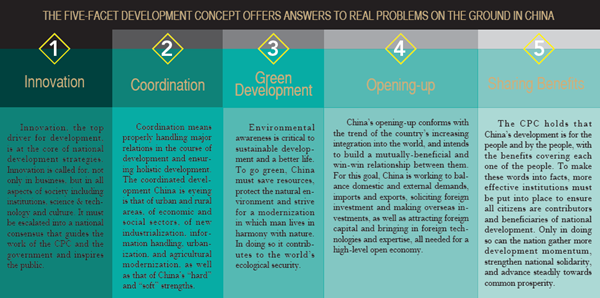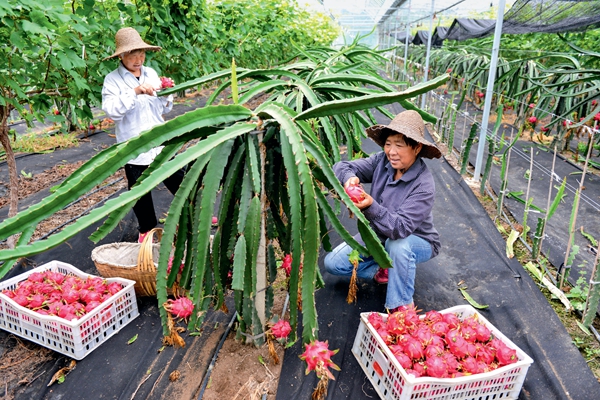Five: The Figure to Decode China’s Future
China Today,September 04, 2017 Adjust font size:
Based on Reality
The five-facet development concept didn’t come out of the blue. It was based on a study and understanding of Chinese reality. Though sounding unglamorous, reality is, in fact, mysterious. If it can be received and perceived, as it is, spontaneously by our minds, and consequently can guide us into proper acts, humankind would have been as omnipotent as God. The reality is in front of the eyes of everyone, but elusive to us, more often than not.
Any informed decision and ensuing effective actions must start with a clear vision of the conditions on the ground. That’s why the CPC has always cautioned its cadres and members to“base ourselves on reality.” The CPC Central Committee organized an extensive survey and research into its preparation of the13th Five-Year Plan, all for the purpose of better knowing reality.

In its findings the current Chinese reality has three salient features.
The first is a“new normal.” The 13th Five-Year Plan is the first of its kind after the Chinese economy entered the“new normal” stage. For this period, its growth gears down to the medium-to-high rate, and the priority shifts from expanding production to adjusting structure and pursuing growth of better quality. The Chinese economy now values quality and efficiency over volume and growth rate. For this goal it is moving away from traditional drivers – primarily resources and cheap labor – to innovation. These are responses to the currents of this time, which, in the words of Chinese leaders, are“independent of man’s will.”
The second is“new problems.” During the 2016-2020 period, China faces fresh opportunities as well as problems in its economic and social development. For instance, some formerly thriving companies are now going through a rough patch owing to falling sales or rising costs. For them the solution lies in“innovation.” Some regions in China are more developed and some people are much wealthier than others. This imbalance calls for“coordination.” For the past few decades China’s development came at the cost of its resources and natural environment. This is why the new development model stresses“green.” Owing most of its past achievements to its opening up, China firmly believes that openness is critical for global development. It feels more obliged to promote“openness” when globalization now meets a headwind. As China’s development reaps more fruits, it must learn to better balance savings and sharing, and ensure fairness in distribution. This is what“shared development” means. Here, we can see, each of the five key words of the new development model responds to a new problem to be tackled by China.

Farm workers harvest dragon fruit in Changxing County, Zhejiang Province on July 10, 2017.
The third is“new demands.” The 18th CPC National Congress declared it wanted to build a moderately prosperous society in all respects by 2020, the last year of the 13th Five-Year Plan period. China has to address plenty of social and economic issues before reaching this goal. One of them is poverty. In this regard President Xi Jinping cautioned:“It would be inexcusable if we announce that we have built a moderately prosperous society in all respects, when tens of millions of our citizens remain below the poverty line.” Social enterprise, environmental protection, and social security are also an Achilles’ heel for China. China therefore aims to maintain a coordinated and balanced development in the 2016-2020 period, as a moderately prosperous society can only be true to its name after all these problems are solved.